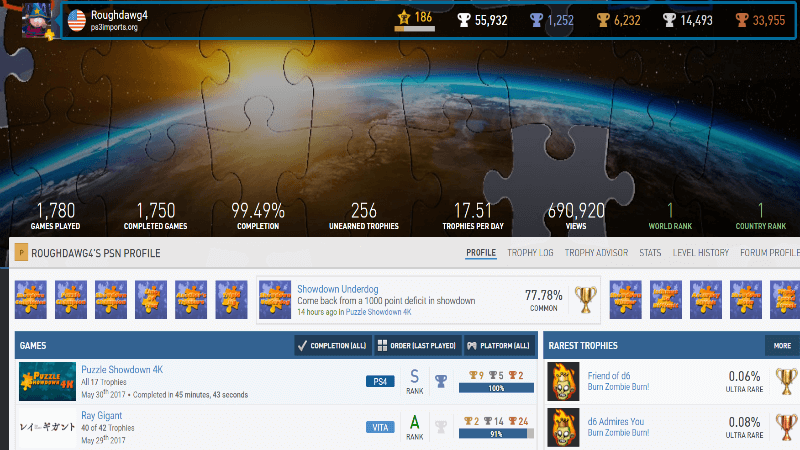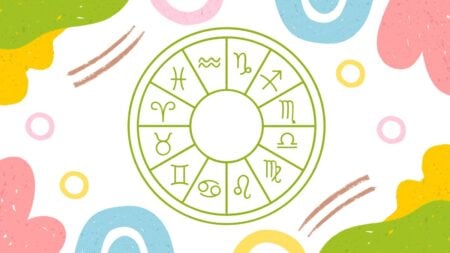PlayStation and
First off, let’s look at the structure of the two different systems, and their way of tracking gamers progress. Achievements are sorted with numerical values, with a majority of the higher ones being worth more (maybe 100 instead of 10), with the score usually adding up to 1000 in total; not taking into account DLC or Arcade games.
Trophies, on the other hand, are separated into 4 different ranks: bronze, silver, gold, and platinum, with the value in the order of least to greatest. While there is a level focus to earning trophies as well – as each Bronze Trophy nets you 15 points, a silver gives you 30, a gold 90, and a mighty platinum gives you a massive 180 points – most gamers usual compare their hordes of trophies, with the knowledge that earning Gold and Platinum trophies are usually very difficult to do in a game.
While the same can be said for
Backtracking a little bit, the foundation for Achievements and Trophies can be traced back to arcades, as each machine would reward the best players with a high score, which would be on display in the form of initials next to the score. This level of competition and gratification are very similar to the stockpiling of points and trophies on console gaming, just less accessible and personalized. It should also be noted the specific Ding and Popping noises that come along with the two systems eventually became pavlovian, with users gaining a sense of euphoria and accomplishment when they finally hear those sounds.
It should also be noted the specific Ding and Popping noises that come along with the two systems eventually became pavlovian, with users gaining a sense of euphoria and accomplishment when they finally hear those sounds.
When the Gamerscore system was introduced on
In the early days of things, most of the Achievements and Trophies simply revolved around rewarding the player for beating the game, as developers likely didn’t think to create harder goals was worth the effort, and that they would fade away as a fad. But they were wrong, as both tracking systems actually managed to find so much success that they have carried over to their most recent platforms as well, so fans didn’t lose their precious stats.
As a result, developers started to focus on creating more difficult achievements and trophies. Personally, the first game I can remember where the creator looked at challenging gamers was the original Gears of War. While it contained many of the standards, beat this level achievements, it also had one of the most daunting ones ever created to this day. The “Seriously” achievement required players to Kill 10000 people in versus ranked match total.
To reach it, players need to put in an insane amount of time into the game, as most ranked matches didn’t result in more than double-digit kills since it was 5 v 5 for only a couple of rounds. But fans loved the idea of being able to join an exclusive club, as only 3 percent of the millions of players who played the game had ever unlocked it.
From there on, developers started to focus on a new market of selling games to gamers, as they could create Achievements and Trophies as a way of getting users to play their games even longer than they would without them. Games that would usually take players only a couple hours to beat would instead be loaded with secondary achievements or trophies to keep them coming back for more.
On the flip side, many creators either ignored the trend or went out of there way to attach the easiest achievements or trophies for their games, in the hopes that people would buy their product as an easier way to boost their scores. The process was called trophy whoring or achievement whoring and created a whole subset of gamers.
Not only did it create an entire subset of gaming, achievement whoring was the premise for an entire company called Achievement Hunter. Founded on July 6, 2008, the company – a subsidiary of Roosterteeth – started with achievement guides and walkthroughs on how to attain easy achievements, and even sometimes trophies, as a way of boosting your gamerscore. Achievement Hunter eventually found so much success and created so many unique personalities in their videos, they blossomed into an entirely new company that created video game playthroughs known as Let’s Play.
Thanks to the evolution of Let’s Play’s and the formation of Twitch, people can not only earn Achievements and Trophies but can watch their favorite gamers do so through streaming platforms. This once again created a unique subset in the gaming industry.
Taking things to even more extremes, there are players on both consoles that want the notoriety of having the arcade equivalent of the highest score. For Platinum trophies that would be PSN gamer Roughdawg4, while the highest gamerscore goes to “Stallion83” (Ray Cox).
The PlayStation Platinum trophies God currently holds the top spot with 1,252 Platinums and 55,932 trophies in total across PS4, PS3 & PS VITA leaderboards, ranked #1 in the world. In an interview earlier this year with Paste Magazine, he talked about how trophies changed how he plays games.
“The best thing about trophies is most of the time it forces you to play games a way you might not have done otherwise,” He told the interviewer. “You experience those hidden gems that make it all worth it.”
Roughdawg4 goes on to explain that despite the frustration that comes along with earning the trophies, it’s just as rewarding. Alongside the feeling of accomplishment when finally conquering a tough trophy, he also said that there is no better feeling than finding yourself in an elite group of company with difficult trophies as well.
Microsoft’s equivalent, the man knew on
As a reward for his hard work, he was presented him with a lifetime
It’s crazy to look back on something that is as simple as an aesthetic reward for playing a game a specific way and see just how it has changed one of the fast growing industries in the world. You can be sure that there is still more to come in the evolution of













